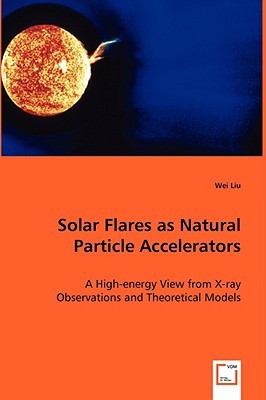
- We will send in 10–14 business days.
- Author: Wei Liu
- Publisher: VDM Verlag Dr. Mueller E.K.
- Year: 2008
- Pages: 252
- ISBN-10: 3836474328
- ISBN-13: 9783836474320
- Format: 15.2 x 22.9 x 1.4 cm, minkšti viršeliai
- Language: English
- SAVE -10% with code: EXTRA
Reviews
Description
Solar flares, which have significant space weather consequences, are natural particle accelerators and one of the most spectacular phenomena of solar activity. RHESSI is the most advanced solar X-ray and gamma-ray mission ever flown and has opened a new era in solar flare research following its launch in 2002. This book offers a glimpse of this active research area from a high-energy perspective and contains a comprehensive guideline for RHESSI data analysis. Its main theme is the investigation of particle acceleration and transport in solar flares. The strength of this book lies in its well-balanced account of the latest X-ray observations and theoretical models. The observational focus is on the morphology and spectra of imaged X-ray sources produced by nonthermal electrons or hot plasma. The modeling takes the novel approach of combining the Fokker-Planck treatment of the accelerated particles with the hydro-dynamic treatment of the heated atmosphere. Applications of this modeling technique reach beyond the Sun to other exotic environ-ments in the universe, such as extrasolar planetary auroras, stellar flares, and flares on accretion disks around neutron stars and black holes.
EXTRA 10 % discount with code: EXTRA
The promotion ends in 22d.19:12:00
The discount code is valid when purchasing from 10 €. Discounts do not stack.
- Author: Wei Liu
- Publisher: VDM Verlag Dr. Mueller E.K.
- Year: 2008
- Pages: 252
- ISBN-10: 3836474328
- ISBN-13: 9783836474320
- Format: 15.2 x 22.9 x 1.4 cm, minkšti viršeliai
- Language: English English
Solar flares, which have significant space weather consequences, are natural particle accelerators and one of the most spectacular phenomena of solar activity. RHESSI is the most advanced solar X-ray and gamma-ray mission ever flown and has opened a new era in solar flare research following its launch in 2002. This book offers a glimpse of this active research area from a high-energy perspective and contains a comprehensive guideline for RHESSI data analysis. Its main theme is the investigation of particle acceleration and transport in solar flares. The strength of this book lies in its well-balanced account of the latest X-ray observations and theoretical models. The observational focus is on the morphology and spectra of imaged X-ray sources produced by nonthermal electrons or hot plasma. The modeling takes the novel approach of combining the Fokker-Planck treatment of the accelerated particles with the hydro-dynamic treatment of the heated atmosphere. Applications of this modeling technique reach beyond the Sun to other exotic environ-ments in the universe, such as extrasolar planetary auroras, stellar flares, and flares on accretion disks around neutron stars and black holes.


Reviews